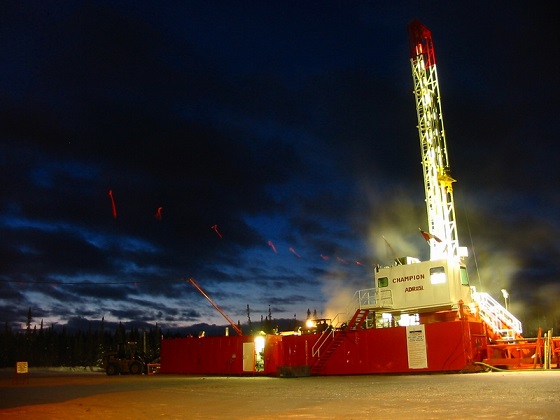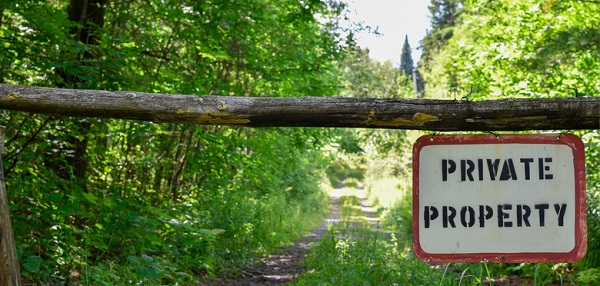Energy
Unlocking Canada’s energy potential

Resource Works CEO and founder Stewart Muir has laid out the conditions for Canada to realize its potential
How can Canada fully realize its energy potential?
Stewart Muir – CEO of Resource Works – often speaks about this question. According to Muir, Canada’s abundant natural resources, skilled workforce, and high standards give us a strong foundation to build on. But to translate these strengths into true economic and environmental leadership, a few key conditions must be met.
Below are five key conditions Muir highlights (especially regarding LNG and oil development) that can help Canada seize its energy opportunity:
Streamlined & Efficient Regulation – Unnecessarily lengthy and unpredictable approval processes have stalled projects and scared away investors. Muir advocates cutting red tape and speeding up decisions so that government isn’t working “at cross purposes” with industry . Reforming Canada’s permitting and regulatory processes would make energy projects more viable and globally competitive, allowing development to proceed faster without compromising standards.
Strong Indigenous Partnerships – Canada’s energy future needs to be built in true partnership with Indigenous peoples. Muir points out that First Nations are increasingly co-leading resource projects, with over 500 economic and reconciliation agreements in British Columbia alone. Embracing Indigenous leadership – through equity partnerships, consultations, and benefit-sharing – not only advances reconciliation but also creates certainty and shared prosperity for energy developments. Projects move forward best when Indigenous communities are on board as genuine partners.
Robust Infrastructure & Market Access – To capitalize on our resources, Canada must expand and modernize the infrastructure that gets energy to market. That means building and upgrading pipelines, ports, and LNG terminals. The recent completion of the Trans Mountain Expansion (TMX) pipeline is a proof point – it’s already moving Canadian oil to U.S. and Asian buyers , helping fetch better prices. Muir and others argue we also need to develop new LNG capacity, including on the East Coast, to supply allies in Europe . By investing in strategic infrastructure, Canada can ensure its oil and gas reach global markets efficiently and safely, turning resource potential into real economic growth.
Proactive Global Market Positioning – Canada has to seize its moment in the global energy market. Demand for energy is skyrocketing worldwide, yet Canada hasn’t fully stepped up to meet it. For example, when allied nations like Germany and Japan turned to Canada for LNG in recent years, they left empty-handed for lack of a “strong business case” to export gas. Meanwhile, other suppliers (the U.S., Qatar, etc.) eagerly filled those needs. Muir emphasizes that Canada must proactively position itself as a reliable exporter – or risk being left behind while others grab the opportunity. That means securing long-term contracts and building trade relationships so Canadian LNG and oil can become go-to choices in Asia, Europe, and beyond. In short, we need to act with urgency on the world stage to claim our share of the market.
Public Confidence through Environmental Leadership – Earning public trust is essential for any energy project to succeed. Canadians need to see that resource development can coexist with high environmental standards and climate responsibility. Muir notes that strengthening public confidence in energy and mining projects could help “preserve and unlock” the economic value of Canada’s huge reserves, and even position Canada as a leader in how to do resource development right. This means being transparent, engaging communities early, and upholding world-class environmental protections. Canada’s own track record shows that responsible resource development is not just possible – “it’s our forte”. By leading with strong environmental performance (for instance, using clean technology and cutting emissions per barrel), project developers can build the social license to operate. In turn, this public trust enables more projects to move ahead, aligning economic growth with our climate and environmental commitments.
Bottom Line: Muir’s vision suggests that if Canada delivers on these conditions – from faster approvals and better partnerships to smarter infrastructure and trust-building – we can translate our natural advantages into both prosperity and sustainability. Canada has the resources and know-how; now it’s about having the will to act.
By focusing on these key areas, Canada can become not only an energy powerhouse at home, but also a global example of economic and environmental leadership in responsible energy development.
Energy
A Breathtaking About-Face From The IEA On Oil Investments


From the Daily Caller News Foundation
Surveying the landscape of significant energy news each morning is a daily exercise for any energy-focused writer. It’s hard to write competently about energy unless you have a grasp on current events in that realm.
On Tuesday, one story’s headline almost leapt off the page as I was engaging in that daily task. That headline atop a story at industry trade publication Upstream Online reads, “Oilfield decline will hasten without $540 billion annual investment, says IEA.” In support of that thesis, International Energy Agency chief Fatih Birol says in a statement that, “Decline rates are the elephant in the room for any discussion of investment needs in oil and gas, and our new analysis shows that they have accelerated in recent years.”
Oh, you don’t say.
To anyone familiar with the past pronouncements emanating from Mr. Birol and the IEA, this amounts to one of the most breathtakingly ironic about-faces ever seen. After all, it was only four years ago that Birol and his IEA analysts informed the world that new investments in exploration and development of additional crude oil resources were no longer needed or desired thanks to the glorious expansion of wind and solar capacity and electric vehicles that were destined to end the need to use oil and gas by the year 2050.
In May, 2021, the IEA published a report that urged every national government to immediately halt new investments in efforts to find and produce new reserves of oil, saying, “Beyond projects already committed as of 2021, there are no new oil and gas fields approved for development in our pathway, and no new coal mines or mine extensions are required. The unwavering policy focus on climate change in the net zero pathway results in a sharp decline in fossil fuel demand, meaning that the focus for oil and gas producers switches entirely to output – and emissions reductions – from the operation of existing assets.”
On Aug. 4 of that same year, Birol himself told a meeting of Catholic Church leaders that “there is no need to invest in oil, gas or coal.”
On Oct.14, 2021, Birol doubled down on that particular sophistry in a post on Twitter, with this claim: “There is a looming risk of more energy market turmoil. Oil & Gas spending has been depressed by price collapses in recent years. It’s geared toward a world of stagnant or falling demand.”
Of course, the problem with the IEA’s thesis then is the same as now: Demand for crude oil has been neither stagnant nor falling. It has in fact continued to rise apace with global economic expansion, continuing a trend that has characterized the industry’s growth path for well over a century now. Economic growth has always driven rising demand for oil, just as plentiful supply of oil at affordable prices drives further economic growth. It is and always has been a mutually sustaining relationship.
Finally, IEA appears to have reached a point at which it is willing to accede to this enduring reality.
In my previous piece here, I detailed the apparent move by Birol and the IEA to shift back to the agency’s original mission to serve as a provider of reliable, fact-based information about the global energy picture. It was a mission the agency consciously abandoned in 2022 in favor of serving as a cheerleader for an aspirational energy transition that isn’t really happening. That return to mission appears to have been motivated by Energy Secretary Chris Wright’s threat to pull U.S. funding from the Agency if it continued down this propaganda pathway.
The IEA report published on Tuesday finally acknowledges the troubling under-investment in exploration and development of new reserves that has plagued the industry for more than a decade now as banks and investment houses discriminated against investing in fossil fuel projects.
Regardless of the reasons behind this latest shift, it is encouraging to see the IEA once again living in the world as it exists rather than the fantasy realm advocated by the global political left.
David Blackmon is an energy writer and consultant based in Texas. He spent 40 years in the oil and gas business, where he specialized in public policy and communications.
Business
Ottawa’s so-called ‘Clean Fuel Standards’ cause more harm than good

From the Fraser Institute
To state the obvious, poorly-devised government policies can not only fail to provide benefits but can actually do more harm than good.
For example, the federal government’s so-called “Clean Fuel Regulations” (or CFRs) meant to promote the use of low-carbon emitting “biofuels” produced in Canada. The CFRs, which were enacted by the Trudeau government, went into effect in July 2023. The result? Higher domestic biofuel prices and increased dependence on the importation of biofuels from the United States.
Here’s how it works. The CFRs stipulate that commercial fuel producers (gasoline, diesel fuel) must use a certain share of “biofuels”—that is, ethanol, bio-diesel or similar non-fossil-fuel derived energetic chemicals in their final fuel product. Unfortunately, Canada’s biofuel producers are having trouble meeting this demand. According to a recent report, “Canada’s low carbon fuel industry is struggling,” which has led to an “influx of low-cost imports” into Canada, undermining the viability of domestic biofuel producers. As a result, “many biofuels projects—mostly renewable diesel and sustainable aviation fuel—have been paused or cancelled.”
Adding insult to injury, the CFRs are also economically costly to consumers. According to a 2023 report by the Parliamentary Budget Officer, “the cost to lower income households represents a larger share of their disposable income compared to higher income households. At the national level, in 2030, the cost of the Clean Fuel Regulations to households ranges from 0.62 per cent of disposable income (or $231) for lower income households to 0.35 per cent of disposable income (or $1,008) for higher income households.”
Moreover, “Relative to disposable income, the cost of the Clean Fuel Regulations to the average household in 2030 is the highest in Saskatchewan (0.87 per cent, or $1,117), Alberta (0.80 per cent, or $1,157) and Newfoundland and Labrador (0.80 per cent, or $850), reflecting the higher fossil fuel intensity of their economies. Meanwhile, relative to disposable income, the cost of the Clean Fuel Regulations to the average household in 2030 is the lowest in British Columbia (0.28 per cent, or $384).”
So, let’s review. A government mandate for the use of lower-carbon fuels has not only hurt fuel consumers, it has perversely driven sourcing of said lower-carbon fuels away from Canadian producers to lower-cost higher-volume U.S. producers. All this to the deficit of the Canadian economy, and the benefit of the American economy. That’s two perverse impacts in one piece of legislation.
Remember, the intended beneficiaries of most climate policies are usually portrayed as lower-income folks who will purportedly suffer the most from future climate change. The CFRs whack these people the hardest in their already-strained wallets. The CFRs were also—in theory—designed to stimulate Canada’s lower-carbon fuel industry to satisfy domestic demand by fuel producers. Instead, these producers are now looking to U.S. imports to comply with the CFRs, while Canadian lower-carbon fuel producers languish and fade away.
Poorly-devised government policies can do more harm than good. Clearly, Prime Minister Carney and his government should scrap these wrongheaded regulations and let gasoline and diesel producers produce fuel—responsibly, but as cheaply as possible—to meet market demand, for the benefit of Canadians and their families. A radical concept, I know.
-

 National2 days ago
National2 days agoChrystia Freeland resigns from Mark Carney’s cabinet, asked to become Ukraine envoy
-

 International2 days ago
International2 days agoFrance records more deaths than births for the first time in 80 years
-

 Business2 days ago
Business2 days agoOttawa’s so-called ‘Clean Fuel Standards’ cause more harm than good
-

 Business2 days ago
Business2 days agoThe Truth Is Buried Under Sechelt’s Unproven Graves
-

 Energy2 days ago
Energy2 days agoA Breathtaking About-Face From The IEA On Oil Investments
-

 Health1 day ago
Health1 day agoCanadians diagnosed with cancer in ER struggle to receive treatment as Liberals keep pushing MAiD
-

 COVID-191 day ago
COVID-191 day agoFreedom Convoy leader slams Canadian gov’t agency for praising its treatment of protesters
-

 Frontier Centre for Public Policy2 days ago
Frontier Centre for Public Policy2 days agoBloodvein Blockade Puts Public Land Rights At Risk








